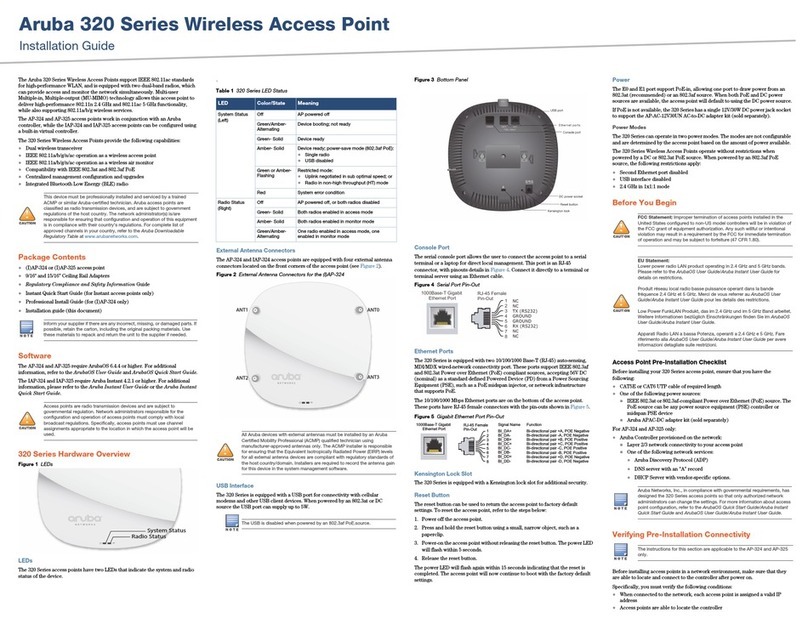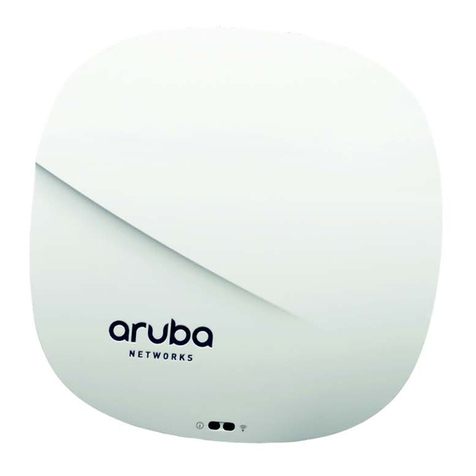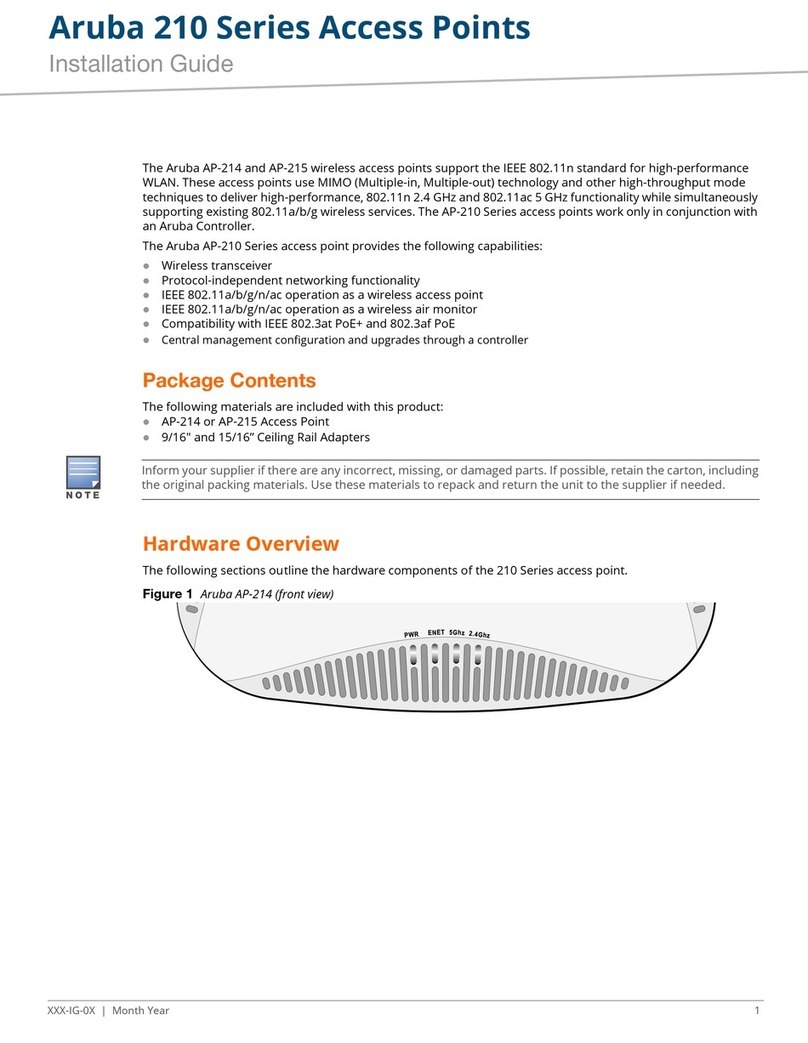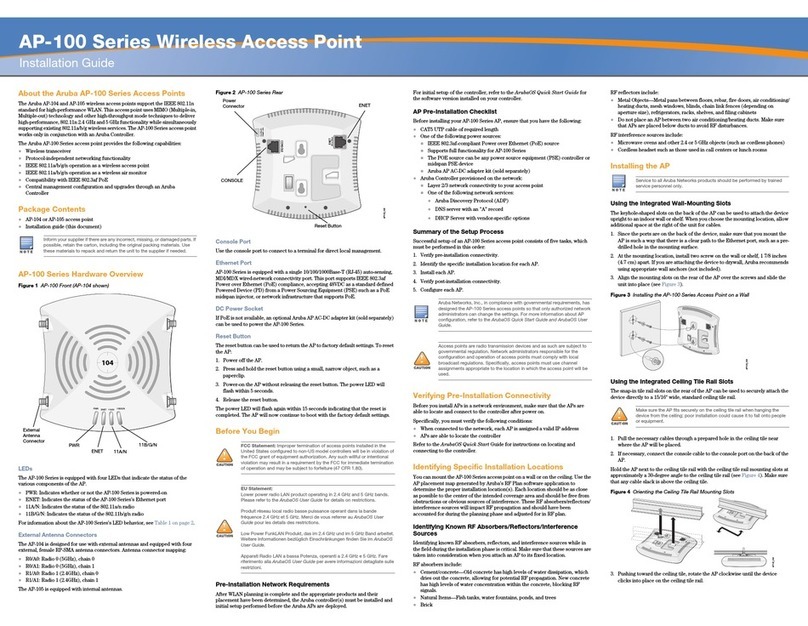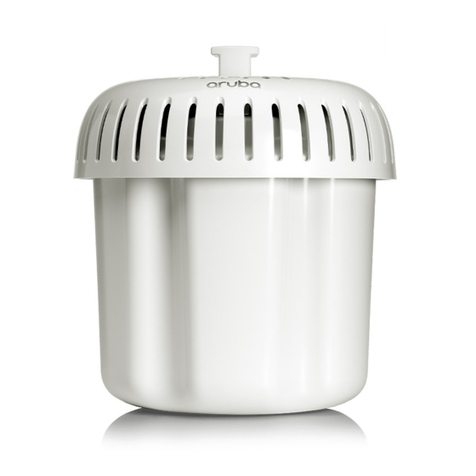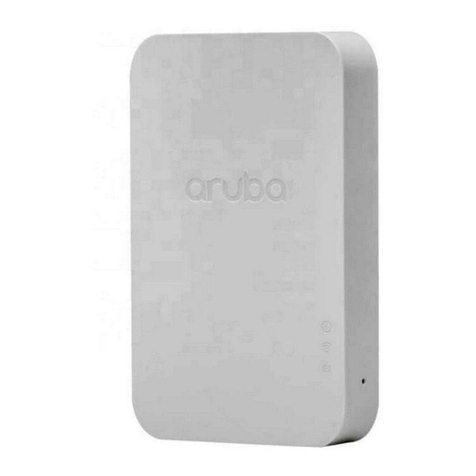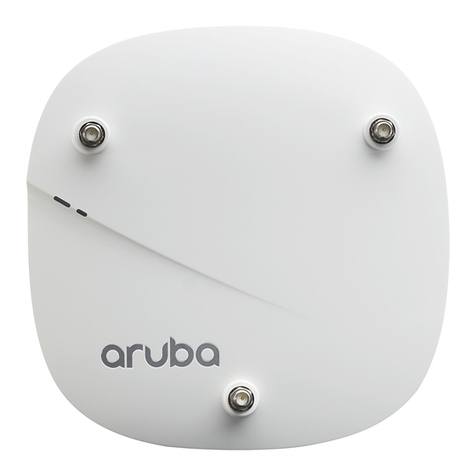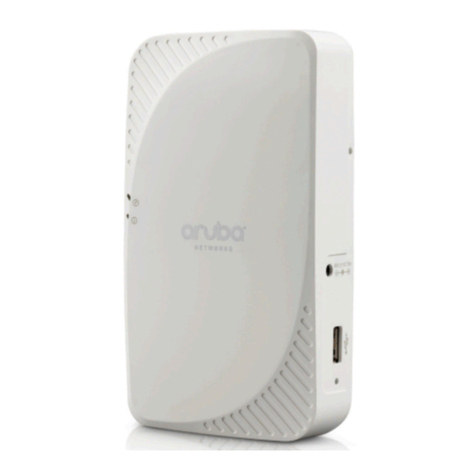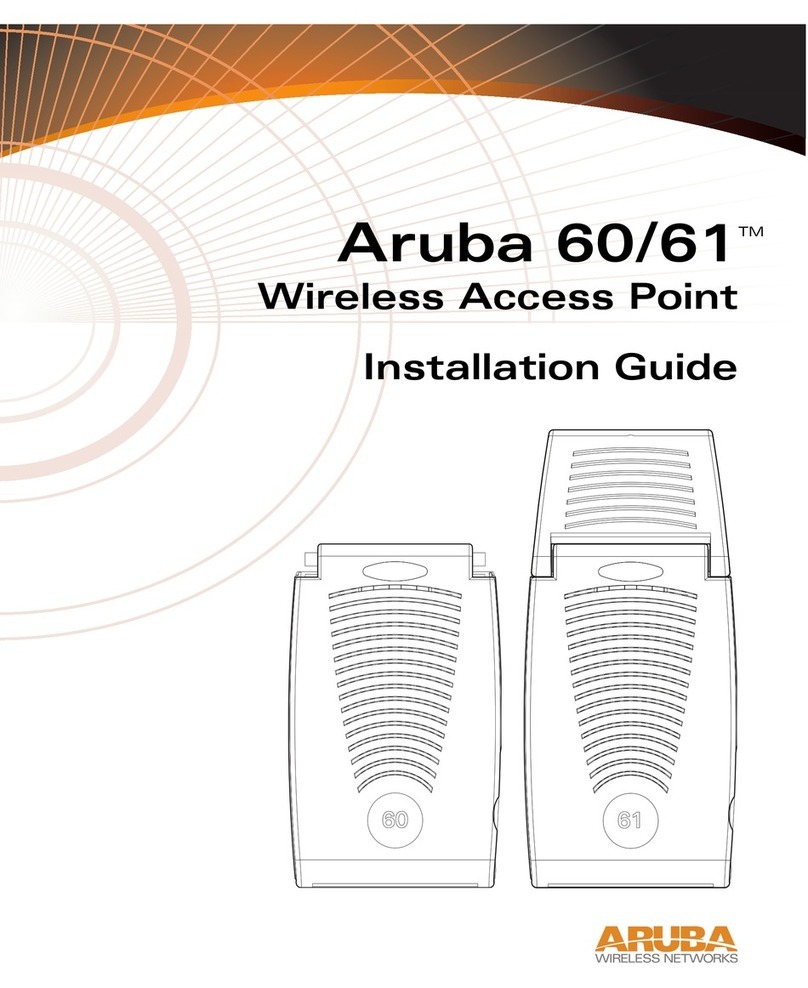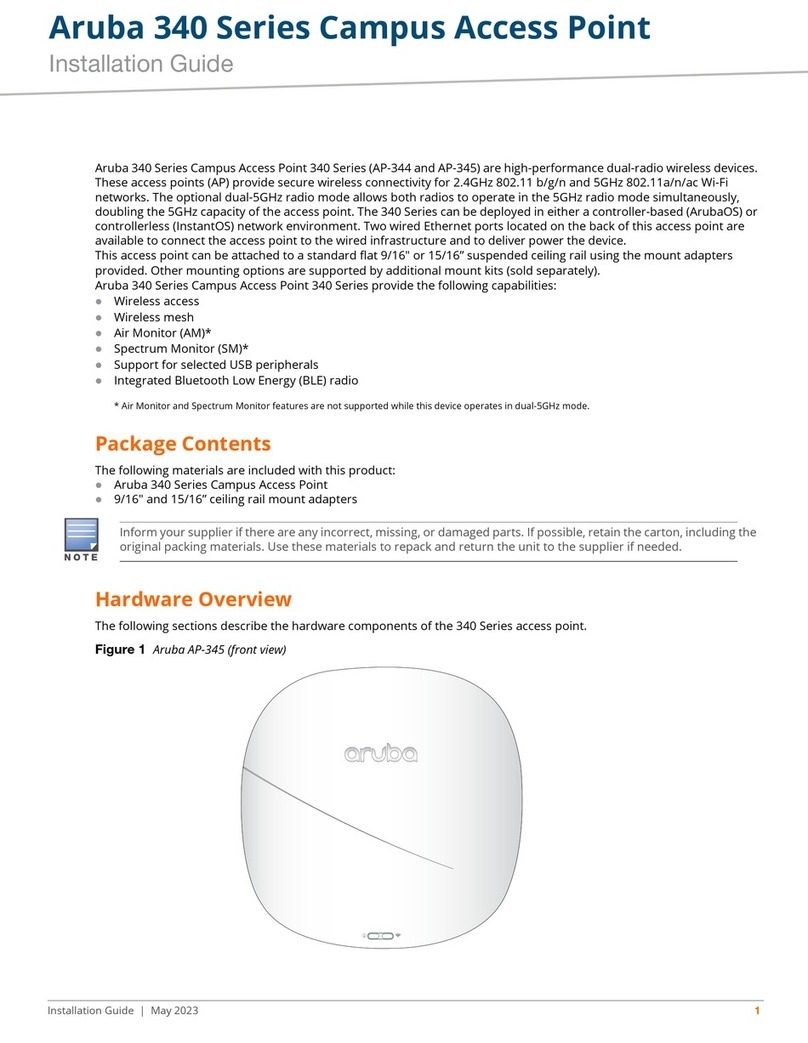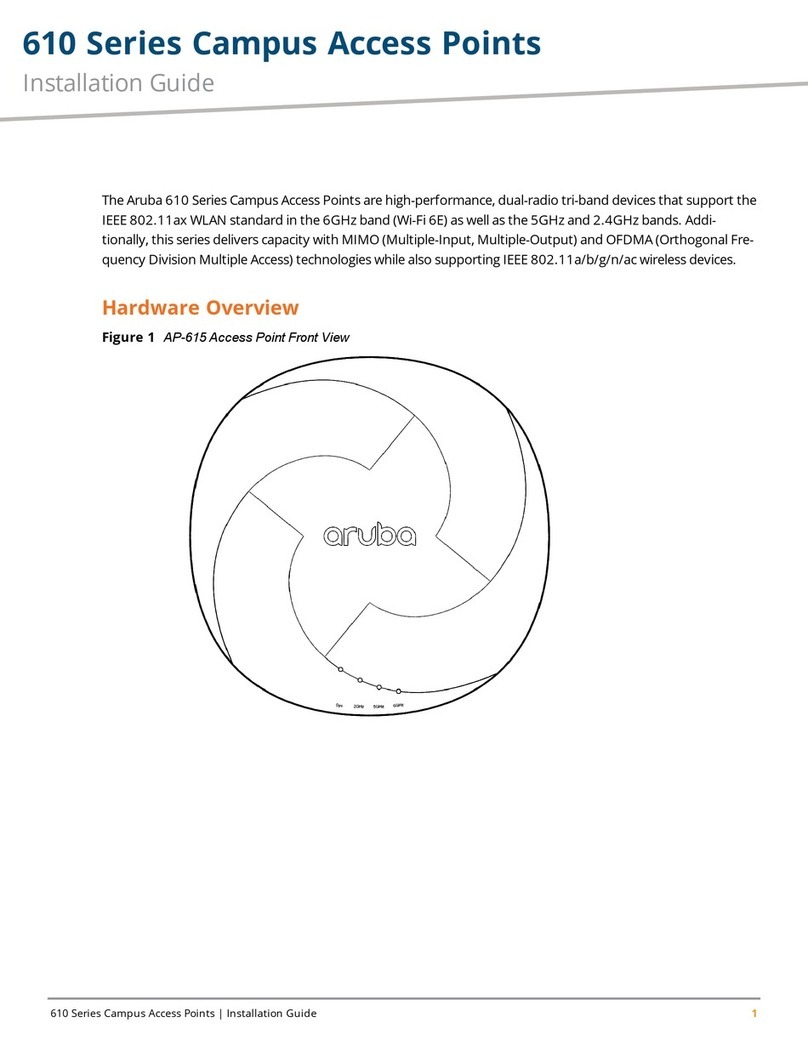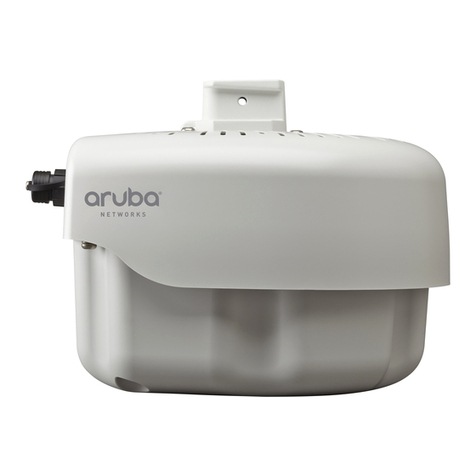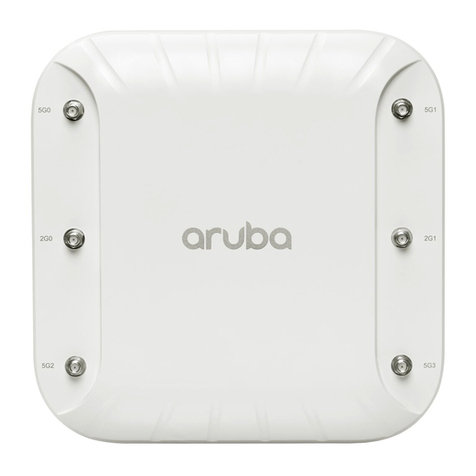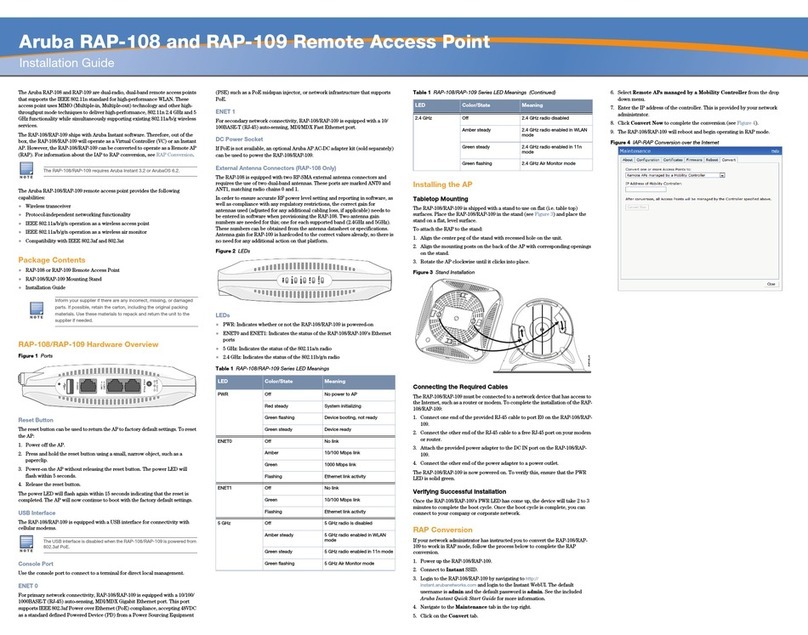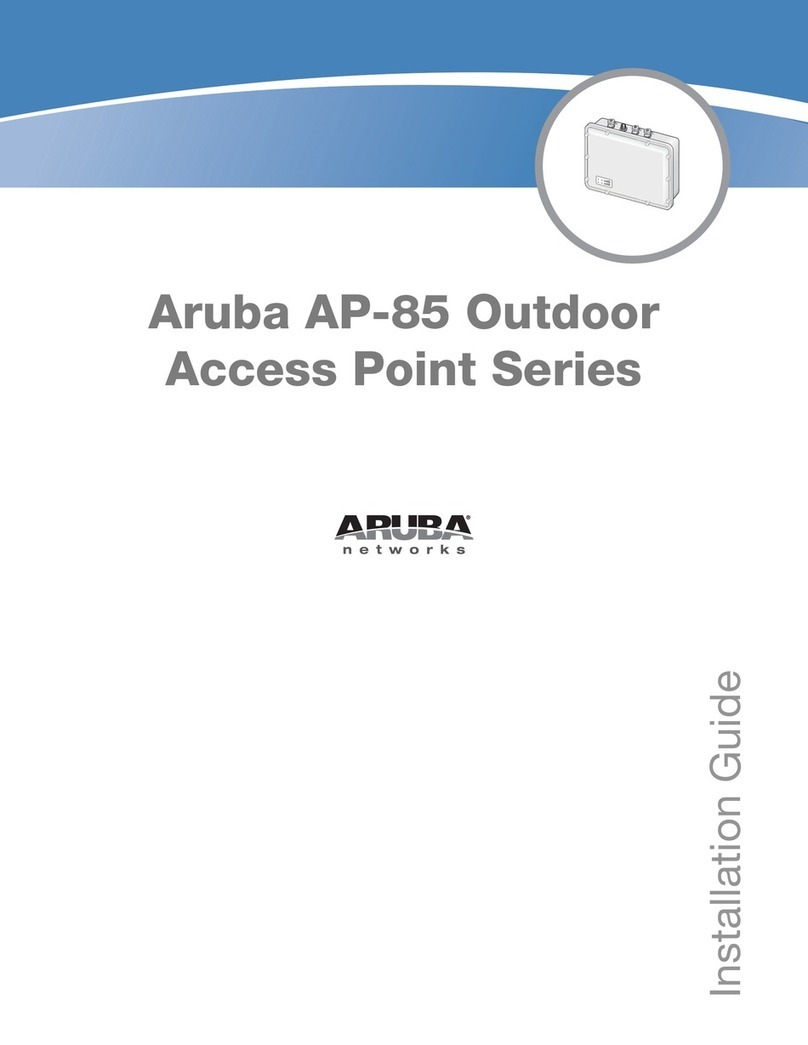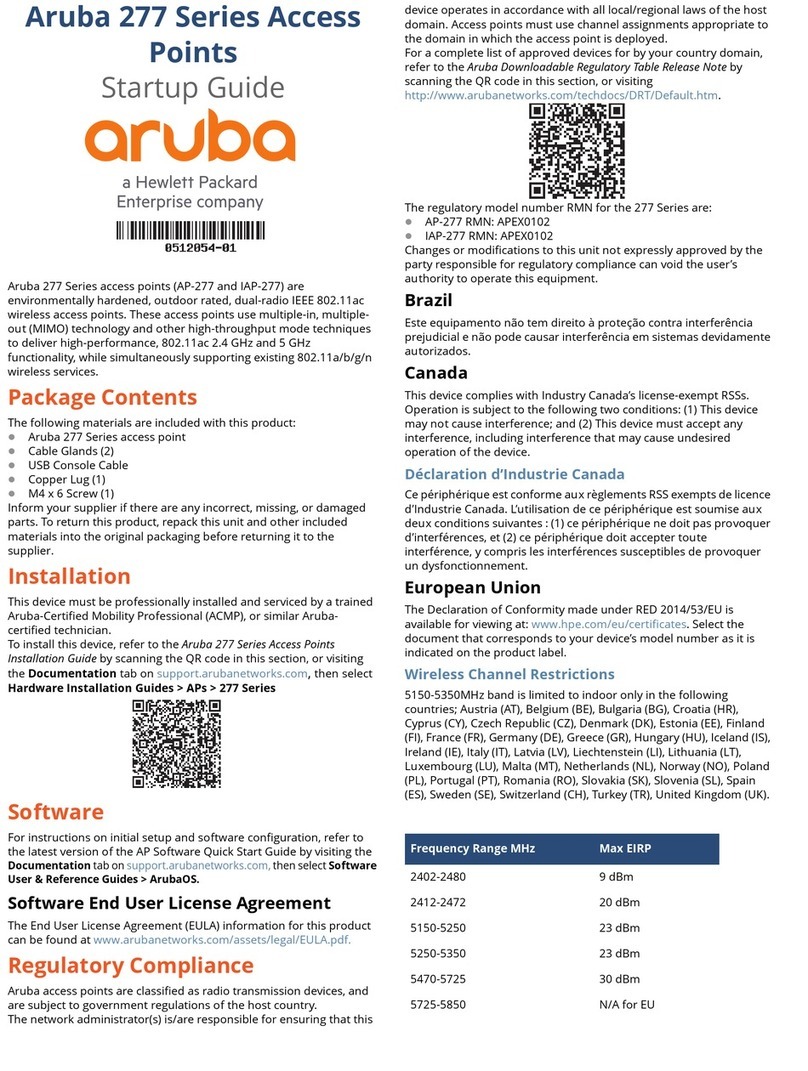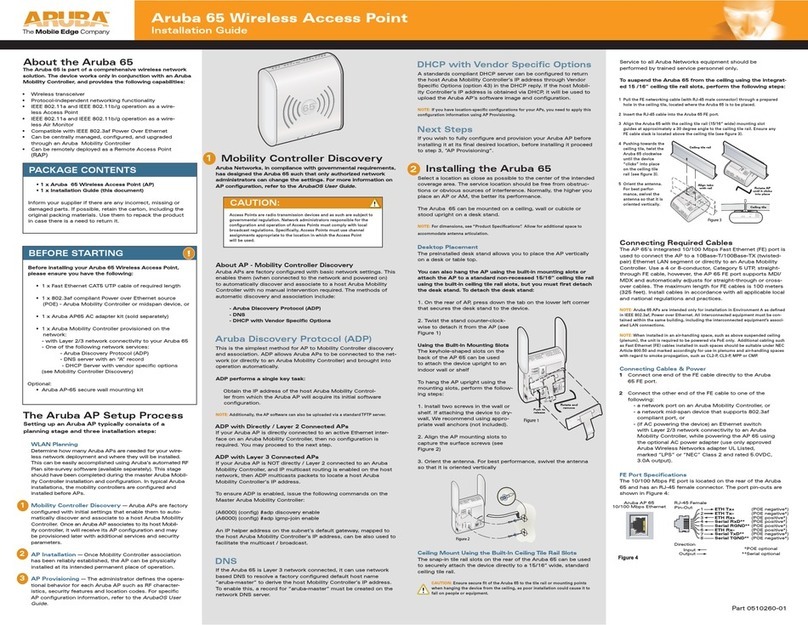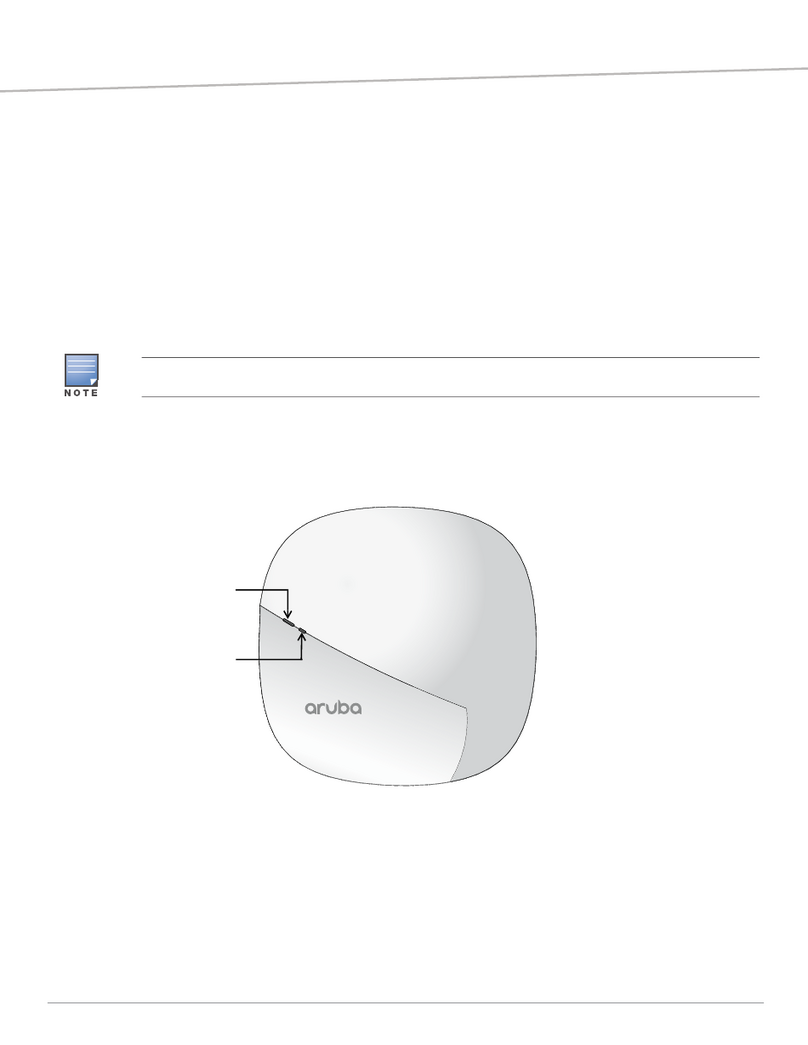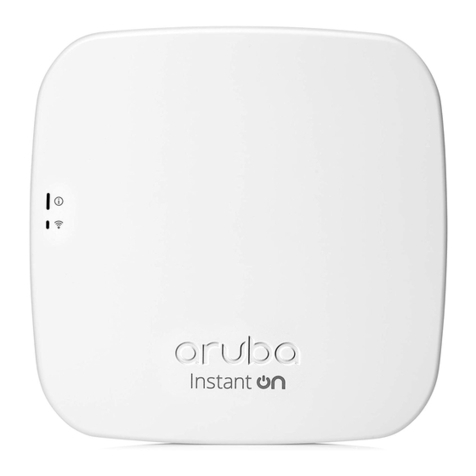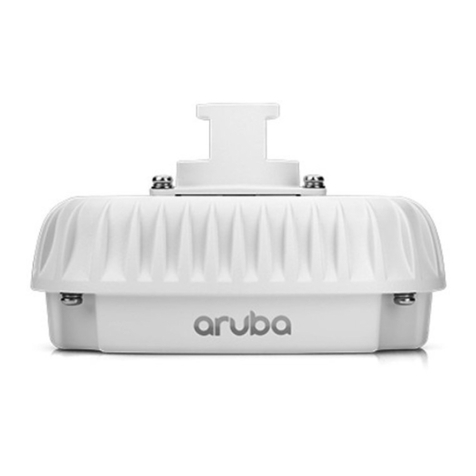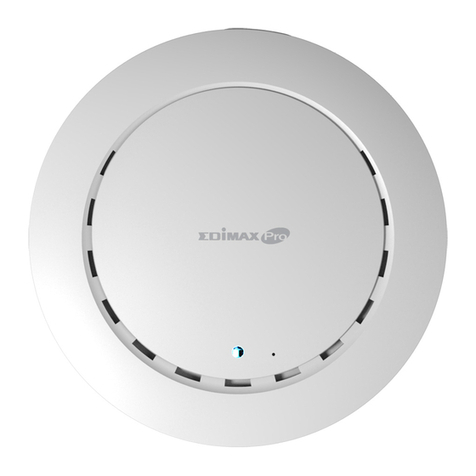
8Aruba AP-270 Series Outdoor Access Points | Installation Guide
Verifying Pre-Installation Connectivity
Before you install APs in a network environment, make sure that the APs will be able to locate and connect to the
controller when they are powered on.
Specifically, you must verify the following conditions:
When connected to the network, each AP is assigned a valid IP address.
APs can locate the controller.
Refer to the ArubaOS Quick Start Guide for instructions on locating and connecting to the controller.
Outdoor Planning and Deployment Considerations
Prior to deploying an outdoor wireless network, the environment must be evaluated to plan for a successful
Aruba WLAN deployment. Successfully evaluating the environment enables the proper selection of Aruba
routers and antennas and assists in the determination of their placement for optimal RF coverage. This process
is considered WLAN or RF planning and Aruba’s system engineers can assist in the outdoor planning process.
For WLAN systems being installed outdoors in the USA, the following requirements must be met.
1. Systems must be professionally installed by a qualified engineer familiar with WLAN, including Aruba
trained partners and resellers.
2. Operation in the 5600-5650-MHz band is prohibited.
3. When within 35 km distance of a TDWR, the center frequency of the WLAN must be separated from the
TDWR center frequency by 30 MHz.
a. If the radar is operating from 5600-5610 MHz, disable the use of channel 116 (5580 MHz).
b. If the radar is operating from 5630-5650 MHz, disable the use of channel 132 (5660 MHz).
For TWDR locations in the US please refer to www.wispa.org/tdwr-locations-and-frequencies.
Identifying Specific Installation Locations
You can mount the AP-270 Series access point on a wall or pole. Use the AP placement map generated by
Aruba’s RF Plan software application to determine the proper installation location(s). Each location should be as
close as possible to the center of the intended coverage area and should be free from obstructions or obvious
sources of interference. These RF absorbers/reflectors/interference sources will impact RF propagation and
should have been accounted for during the planning phase and adjusted for in RF plan.
Identifying Known RF Absorbers/Reflectors/Interference Sources
Identifying known RF absorbers, reflectors, and interference sources while in the field during the installation
phase is critical. Make sure that these sources are taken into consideration when you attach an AP to its fixed
location. Examples of sources that degrade RF performance include:
Cement and brick
Objects that contain water
Metal
Microwave ovens
Wireless phones and headsets
Installing the AP
Access points are radio transmission devices and as such are subject to governmental regulation. Network
administrators responsible for the configuration and operation of access points must comply with local
broadcast regulations. Specifically, access points must use channel assignments appropriate to the location in
which the access point will be used.
Service to all Aruba products should be performed by trained service personnel only.
